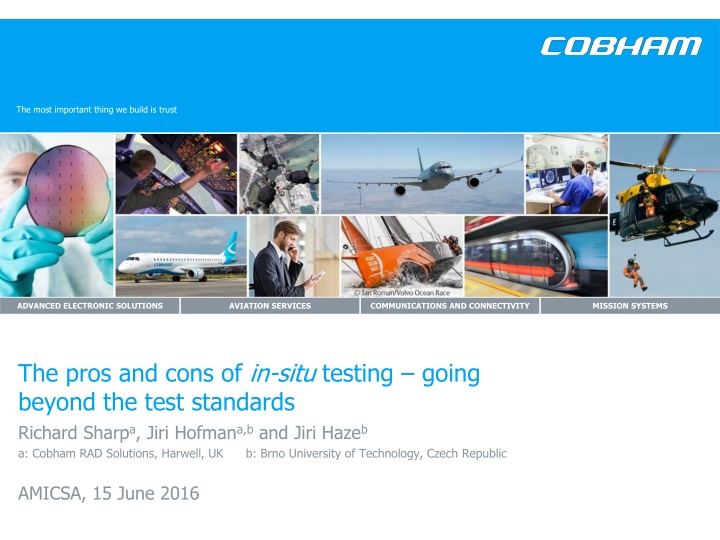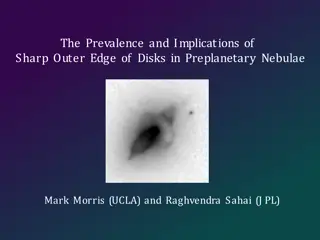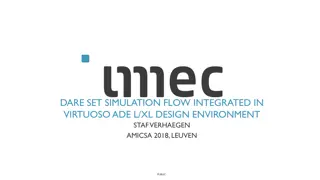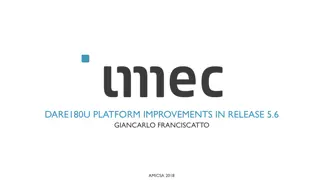
In-Situ Testing in Electronic Components: Standards and Methods
Explore the significance of in-situ testing for electronic components irradiation, comparing ESA ESCC 22900 and Mil-Std-883 method 1019 standards. Learn about the advantages and disadvantages of in-situ measurement versus remote testing in the context of TID tests and more.
Download Presentation

Please find below an Image/Link to download the presentation.
The content on the website is provided AS IS for your information and personal use only. It may not be sold, licensed, or shared on other websites without obtaining consent from the author. If you encounter any issues during the download, it is possible that the publisher has removed the file from their server.
You are allowed to download the files provided on this website for personal or commercial use, subject to the condition that they are used lawfully. All files are the property of their respective owners.
The content on the website is provided AS IS for your information and personal use only. It may not be sold, licensed, or shared on other websites without obtaining consent from the author.
E N D
Presentation Transcript
The most important thing we build is trust ADVANCED ELECTRONIC SOLUTIONS AVIATION SERVICES COMMUNICATIONS AND CONNECTIVITY MISSION SYSTEMS The pros and cons of in-situ testing going beyond the test standards Richard Sharpa, Jiri Hofmana,band Jiri Hazeb a: Cobham RAD Solutions, Harwell, UK b: Brno University of Technology, Czech Republic AMICSA, 15 June 2016
In-situ testing Introduction What do the standards say? Assumptions made in the standards Advantages and disadvantages of in-situ measurement Case study Points to take away today 1 19 March 2025 Cobham plc Cobham plc
Introduction In-situ testing means the measurement of parameters of electronic components at the same time as they are being irradiated during a total integrated dose (TID) test In-situ means that the test samples are left in the radiation field at the same time as being measured, i.e. the irradiation is continuous Remote testing means that, each time the electrical parameters are measured, the irradiation is stopped, the test samples are removed from the irradiation facility, electrically tested and then returned for the next stage of irradiation 2 19 March 2025 Cobham plc Cobham plc
What do the standards say? ESA ESCC 22900 In-situ testing is permitted either during or after irradiation In the case of applications for which TDE is important, the advantages of each method shall be carefully weighed against the disadvantages a control device shall be measured with the measurement system before the insertion of the test devices and again upon completion of the irradiation and measurement series For evaluation testing, remote testing is mandated: Multiple exposures shall be used, with monitoring of electrical parameters in between For qualification and LAT, remote testing is assumed but in-situ measurement is implicitly permitted 3 19 March 2025 Cobham plc Cobham plc
What do the standards say? Mil-Std-883 method 1019 In-flux testing is permitted The use of in-flux testing may help to avoid variations introduced by post-irradiation time dependent effects The language of the standard is generally neutral between in-flux and remote testing, allowing both in all circumstances 4 19 March 2025 Cobham plc Cobham plc
Assumptions in the standards Whilst both standards permit in-situ measurement, the majority of the text assumes that remote measurement is undertaken with a small number of discrete irradiation steps, yielding data at only a small number of values of total dose Recommendations are made concerning the number of dose steps (implied remote testing) and the time constraints around remote testing 22900: minimum of three dose steps 1019: no minimum number, i.e. one data point is acceptable Both standards note that in cases where post-irradiation time dependent effects have an influence then this shall be considered when selecting the test method In practice, most tests use remote measurement and a very small number of dose steps 5 19 March 2025 Cobham plc Cobham plc
Advantages of in-situ testing More data give much finer resolution on the total dose scale Subtle and non-linear effects can be identified Avoids errors due to annealing/TDE between the end of an irradiation step and measurement Measurement can continue uninterrupted after removal of the source, i.e. capturing the immediate annealing behaviour (magnitude and rate) Particularly suitable for DC and low frequency parameters Relay multiplexing techniques allow a single instrument to measure multiple DUTs, especially for the total dose range of relevance to space applications 6 19 March 2025 Cobham plc Cobham plc
Disadvantages of in-situ testing Requires a more complex measurement system Long lead lengths make high speed and high frequency measurements difficult Beware of potential radiation effects on the measurement system Complex, digital devices may always need to be taken to a tester Take care to match the bias conditions during measurements to those during static conditions or to minimise the duty cycle Consider measuring a control device periodically to verify no drift has taken place 7 19 March 2025 Cobham plc Cobham plc
Case study Description of the test TID test of a voltage reference with a nominal output of 2.048V Ultralow noise voltage reference using XFET (eXtra implanted junction FET) technology from Analog Devices Three devices irradiated in a 60Co facility at 360 rad[Si]/hr Output voltage measured with a 6.5 digit DMM Constant, stable bias conditions (5V dc) and stable temperature 20 metre cable between the samples and the DMM 8 19 March 2025 Cobham plc Cobham plc
9 19 March 2025 Cobham plc Cobham plc
Data from three dose steps 2.2 DUT1 2.1 DUT2 Output voltage (V) DUT3 2.0 1.9 1.8 0 50 100 150 200 250 300 350 Total integrated dose (krad[Si]) 10 19 March 2025 Cobham plc Cobham plc
Data from in-situ measurements 2.2 DUT1 2.1 DUT2 Output voltage (V) DUT3 2.0 1.9 1.8 0 50 100 150 200 250 300 350 Total integrated dose (krad[Si]) 11 19 March 2025 Cobham plc Cobham plc
Learning points DC and LF signals are easy to measure using in-situ techniques, whereas high speed signals and very low voltages/currents are more difficult to instrument In-situ measurement can reveal unexpected behaviour and yield valuable insights to the radiation-induced changes, especially for parts that exhibit a non-linear response Dose steps should be selected with care to ensure that any unexpected behaviour is captured In-situ testing could be used as a screening test (e.g. evaluation testing) to check for non-linear changes and so to inform the choice of dose steps for a full TID test (qualification or LAT) based upon remote testing 12 19 March 2025 Cobham plc Cobham plc

















